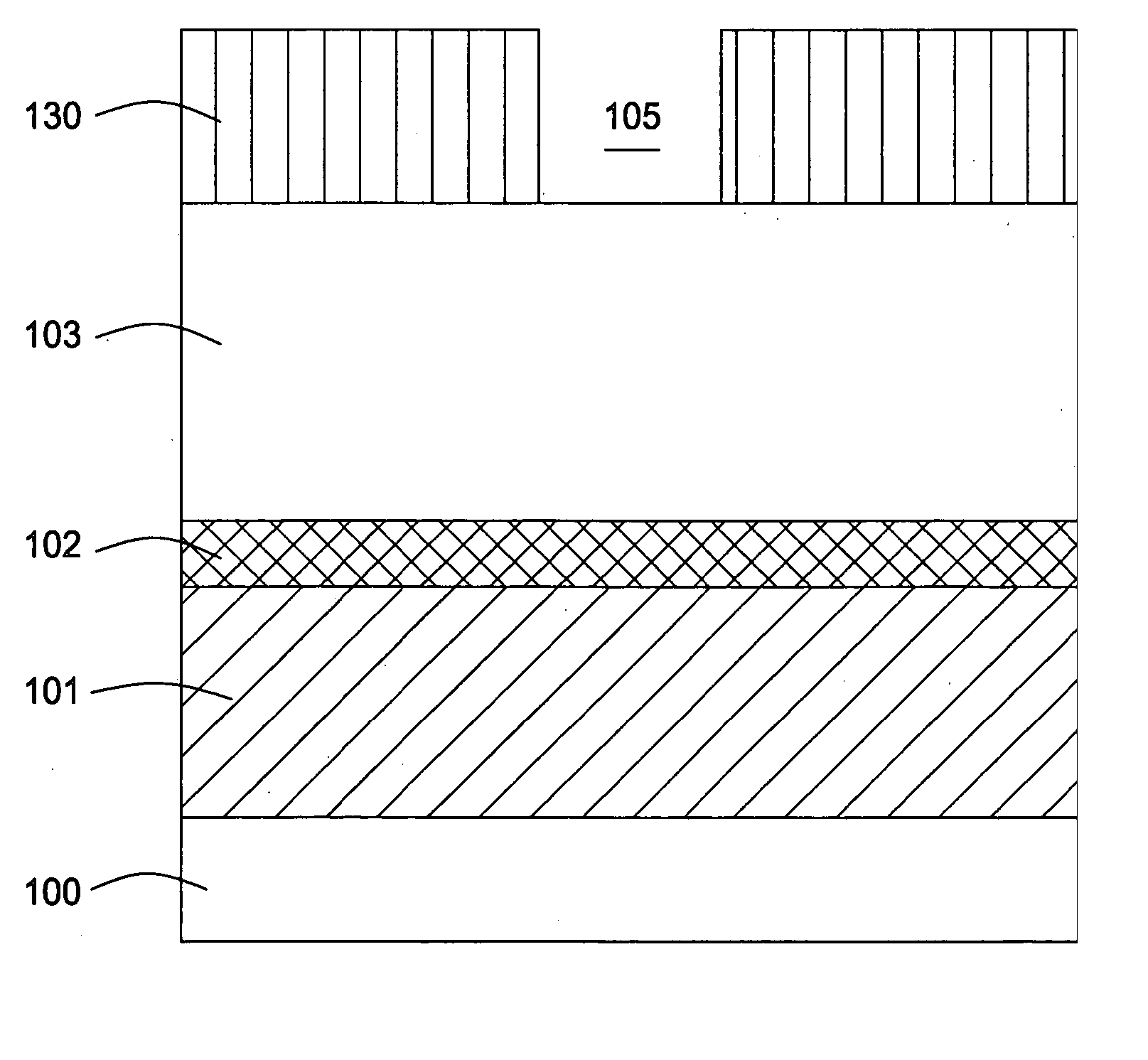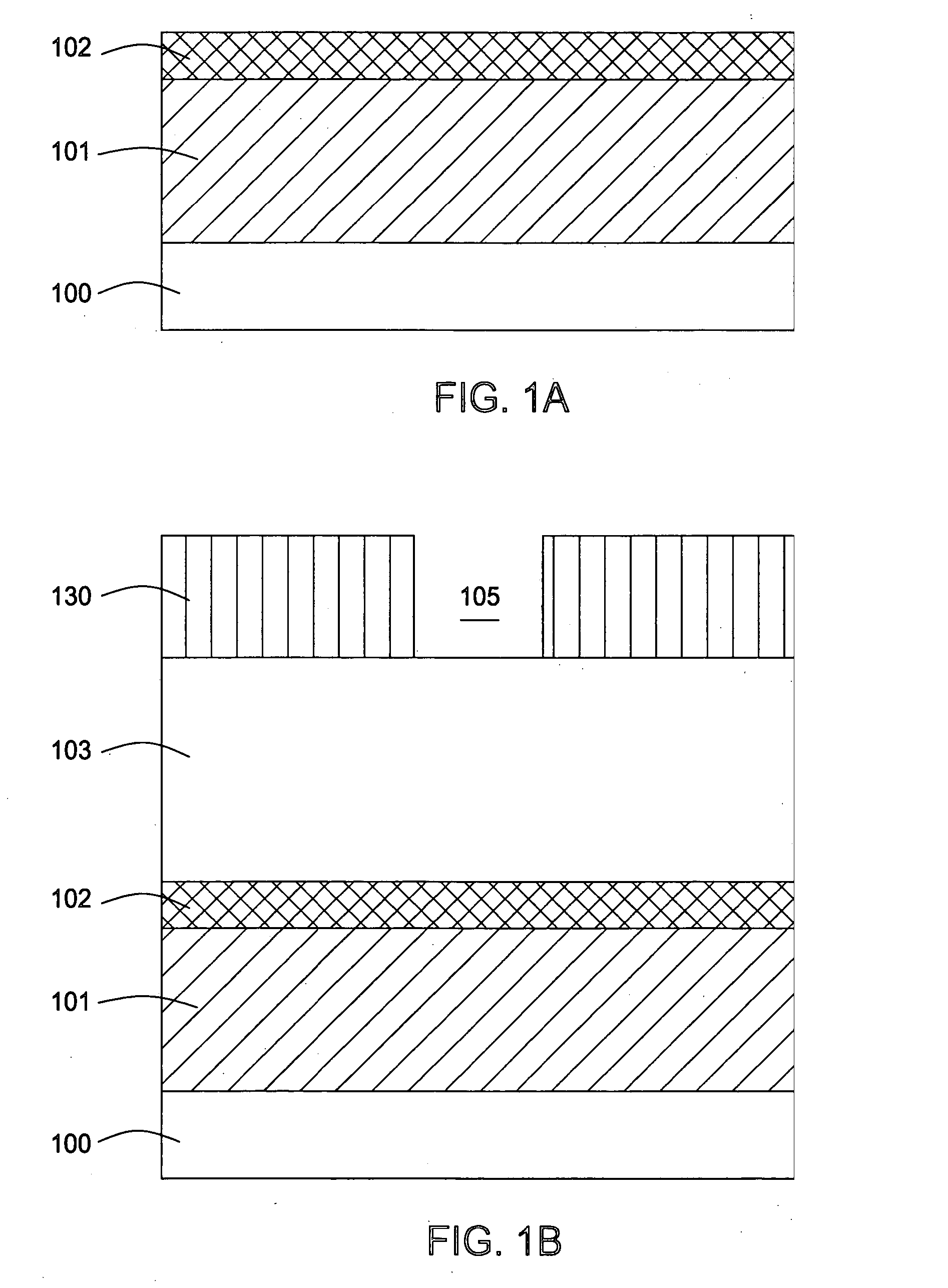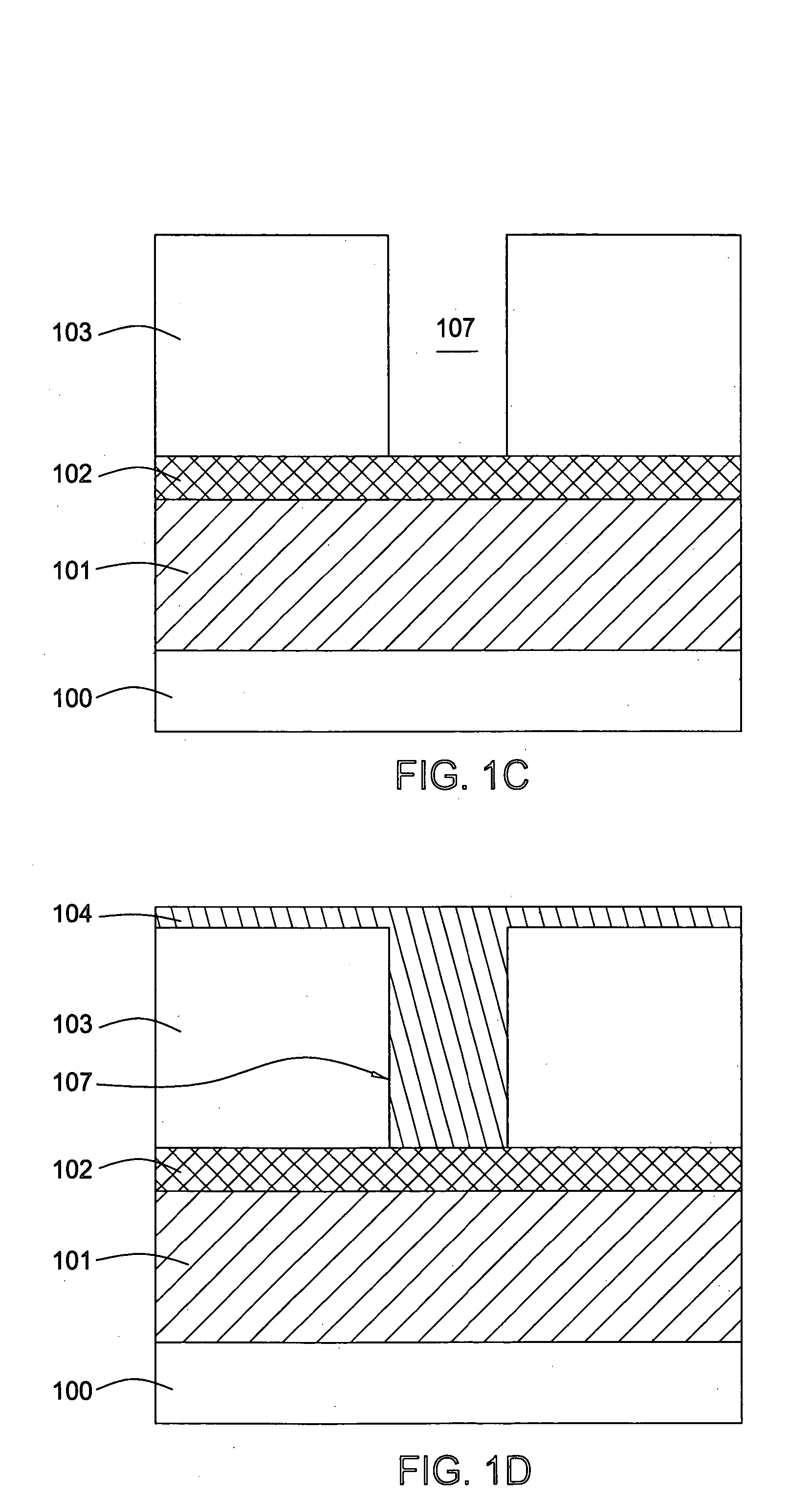Selective etch process of a sacrificial light absorbing material (SLAM) over a dielectric material
a light absorbing material and selective etching technology, applied in the direction of decorative surface effects, electrical appliances, decorative arts, etc., can solve the problems of complex integrated circuits, many challenges in the patterning process, and the application of this technique to dual damascene patterning for sub-0.18 micron technology, and achieves serious challenges in post-etch feature profile control and defect elimination
- Summary
- Abstract
- Description
- Claims
- Application Information
AI Technical Summary
Problems solved by technology
Method used
Image
Examples
Embodiment Construction
The invention is described within the context of a method of forming a dual damascene structure. Although use of the invention to form a dual damascene structure is one embodiment of the invention, those skilled in the art will understand that the invention may find use in any embodiment where sacrificial light absorbing material (SLAM) residue is etched. FIGS. 1A-1I illustrate cross-sectional views that show structures that result after various processing steps to make a copper containing dual damascene interconnect structure. For clarity, these figures are not drawn to scale. A first conductive layer 101 is formed on substrate 100. The conductive layer 101 may be made from materials conventionally used to form conductive layers for integrated circuits, such as copper, copper alloy, aluminum, aluminum alloy, polysilicon, silicide and the like. After forming the conductive layer 101 on substrate 100, a barrier layer 102 is formed on the conductive layer 101.
Barrier layer 102 will...
PUM
| Property | Measurement | Unit |
|---|---|---|
| bias power | aaaaa | aaaaa |
| source power | aaaaa | aaaaa |
| temperature | aaaaa | aaaaa |
Abstract
Description
Claims
Application Information
 Login to View More
Login to View More - R&D
- Intellectual Property
- Life Sciences
- Materials
- Tech Scout
- Unparalleled Data Quality
- Higher Quality Content
- 60% Fewer Hallucinations
Browse by: Latest US Patents, China's latest patents, Technical Efficacy Thesaurus, Application Domain, Technology Topic, Popular Technical Reports.
© 2025 PatSnap. All rights reserved.Legal|Privacy policy|Modern Slavery Act Transparency Statement|Sitemap|About US| Contact US: help@patsnap.com



